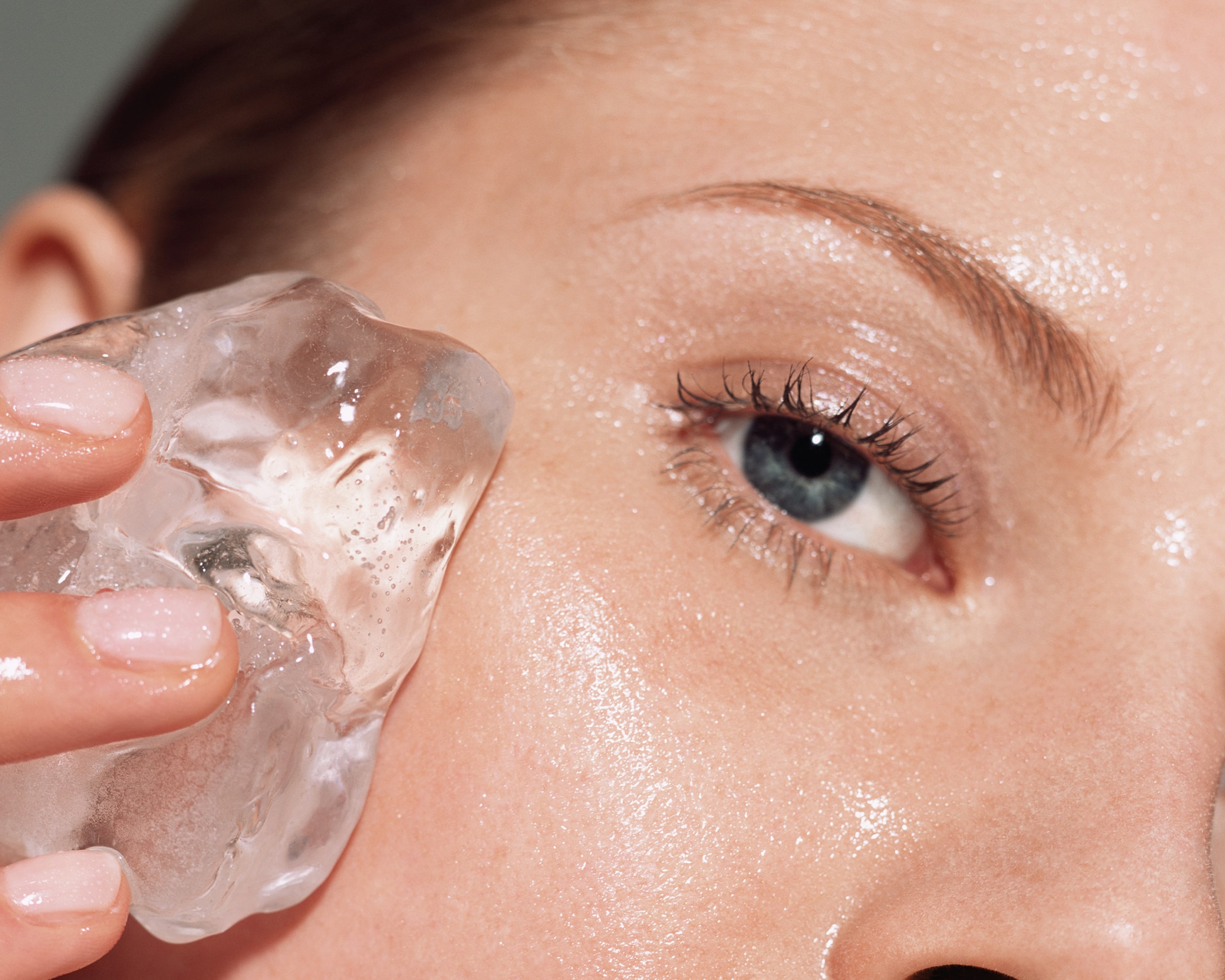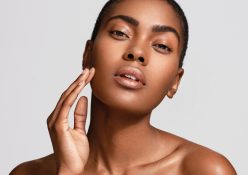Why cold is cool when it comes to getting tighter, smoother, more glowing skin in an instant.
Facial icing, or skin icing, has emerged as a refreshingly cool (pun intended) and innovative technique in the world of skincare. Thanks to TikTok and skincare influencers, this simple yet powerful technique is growing in popularity. Whether you’re looking to reduce puffiness, tighten pores or calm irritated skin, a quick ice treatment might just be the secret weapon your beauty routine has been missing.
@444pray Replying to @Jack3Stewart If you want the same one I have, the link is in my bio #skincare #menskincare #fypシ ♬ original sound – Prayag
But before you dive into the icy goodness, we asked Dr Fawzia Salie, an aesthetic medicine expert and founder of Aesthete, to give us the lowdown on this cool trend —plus some essential tips to get the most out of it.
What exactly is facial icing?
Facial icing is the process of applying ice or cold compresses directly to the face. “It’s a non-invasive technique that, with the right tools, can easily be done at home says Dr Salk. “The cold temperature stimulates blood flow to the skin’s surface, which then helps brighten the complexion, reduce puffiness and promote a more youthful appearance, among other benefits?’
It may sound simple, but the effects of facial icing are far-reaching, she says. “When done correctly, it can provide noticeable improvements in your skin’s tone, texture and overall health.”
What are the benefits of facial icing?
Dr Salie explains in more detail why this is an excellent addition to your current beauty routine:
Reduces puffiness: Ice constricts blood vessels, which helps reduce swelling and puffiness, especially around the eyes and cheeks. This makes it a fantastic option for those who wake up with a puffy face.
Soothes inflammation: If you have acne, rosacea or sensitive skin, the cooling effect of facial icing can help calm inflammation and reduce redness.
Tightens skin: The cold constricts the skin, which temporarily tightens pores. This then provides a more toned, firm appearance -ideal for those looking to boost their skin’s elasticity without trying invasive procedures.
Enhances circulation: Because applying ice to the face stimulates blood flow, it helps deliver oxygen and nutrients to the skin, leaving it looking more radiant and refreshed.
Reduces oiliness: The cooling effect can help regulate oil production, making it beneficial for individuals with oily or acne-prone skin.
What are the different methods of skin icing?
Ice cubes: The simplest form of facial icing, where you wrap a couple of ice cubes in a soft cloth and gently massage it across your face.
Herbal ice cubes: You can add natural beauty ingredients like green tea, rose water or aloe vera to your ice-cube tray to create soothing, antioxidant-rich ice cubes that not only cool but also nourish your skin.
Ice rollers: A convenient tool for facial icing, ice rollers are designed to be chilled in the freezer and then rolled across the face. They allow for more even product application and target specific areas, like the under-eye region.
Frozen facial masks: Some people opt for frozen sheet masks or gel-based masks that have been chilled, providing both hydration and a cooling effect simultaneously.

How to do it yourself
To get the most out of facial icing, it’s important to do it properly:
- Cleanse your face thoroughly before applying ice, so you’re not rubbing dirt or oils into your skin.
- Wrap the ice in a soft cloth or use an ice roller to prevent direct contact with the skin, which can cause irritation or ice burns.
- Massage gently in circular motions or glide the roller slowly across your face for about 1-2 minutes, focusing on areas of puffiness or inflammation.
- Be mindful of time when you’re icing. While it could be tempting to ice for longer, aim for 1-2 minutes per area, as prolonged exposure can lead to skin irritation.
Ice vs Heat
Using both heat and cold are go-to therapies to boost skin health but knowing when to use what is key.
Use ice for:
- Calming irritated or hypersensitive skin
- Temporarily shrinking pores
- Treating puffiness (especially around the eyes)
- Tightening the skin
- Reducing any inflammation, redness or swelling
Use heat for:
- Opening pores to improve the effectiveness of exfoliation and product absorption
- Boosting circulation to promote healing
- Relieving tension and muscle stiffness
- Softening the skin before exfoliation or shaving
How often is it necessary?
Over-icing can damage your skin and cause dryness so it’s important to listen to your skin. For most people, two or three times a week is ideal, especially if you have sensitive skin. If you’re using icing to reduce puffiness or combat acne, you might benefit from more frequent applications in the morning or evening.
Who Shouldn’t Ice Their Face?
Those with conditions like Raynaud’s disease, which affects blood circulation, or individuals with very thin or compromised skin, should avoid facial icing or consult with a specialist before trying it.
Can any type of ice be used?
While regular water ice cubes are most commonly used, your skin will benefit from adding one of these:
Green Tea: Rich in antioxidants, green tea can help fight free radicals, reduce redness and soothe inflamed skin.
Aloe Vera: Irritated skin will benefit from its anti-inflammatory, calming properties.
Rose Water: Particularly good for those with dry or sensitive skin, rose water soothes the skin.
Which skin types is icing suitable for?
Facial icing can benefit nearly all skin types, but it’s especially helpful for:
Oily and acne-prone skin: It can help reduce oil production and prevent clogged pores, which is essential for acne management.
Sensitive skin: For those who experience redness or inflammation (as with rosacea, for instance), the cooling effect of facial icing can help calm flare-ups and irritation.
Ageing skin: The skin-tightening and circulation-boosting benefits of icing help reduce fine lines and promote a more youthful glow.
Does it complement any other facial treatments?
When trying other non-surgical treatments to improve the appearance of your skin, facial icing provides extra benefits to treatments such as:
- Collagen-boosting injectables and dermal fillers. Facial icing can reduce post-treatment swelling and bruising.
- Microneedling or growth factor induction therapies. Facial icing helps to calm the skin after the procedure. It also helps to reduce redness and promote faster healing.
By: Leila Petersen
Photography by: Gallo/Getty images, Freepik, Supplied
Text courtesy of Club magazine
Also read: 6 top tips to winterproof your skin







